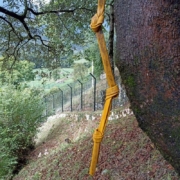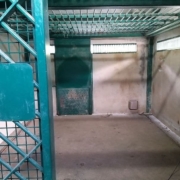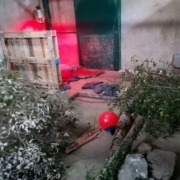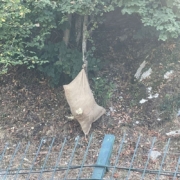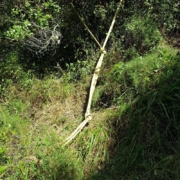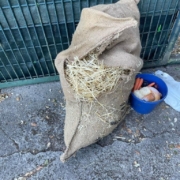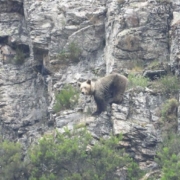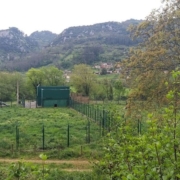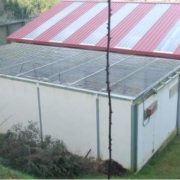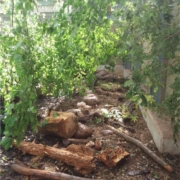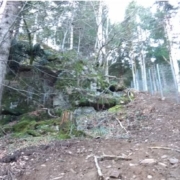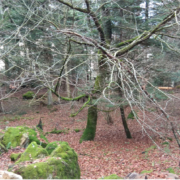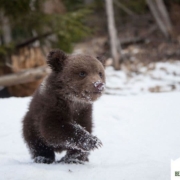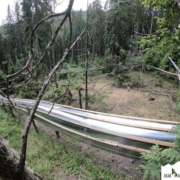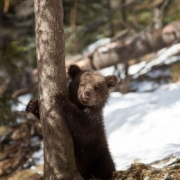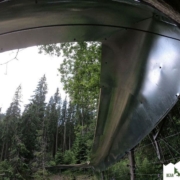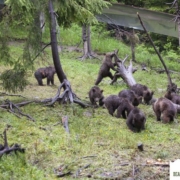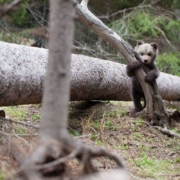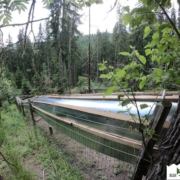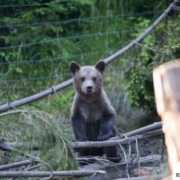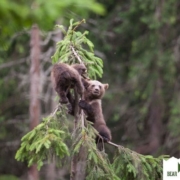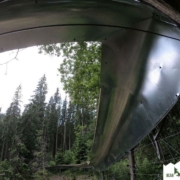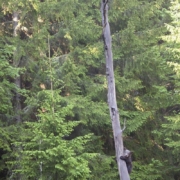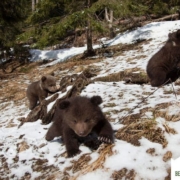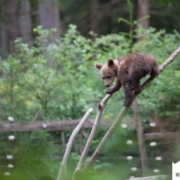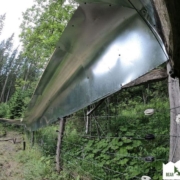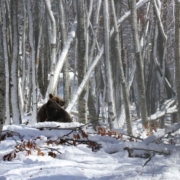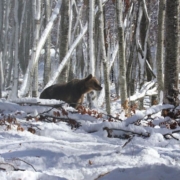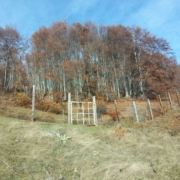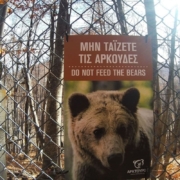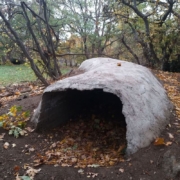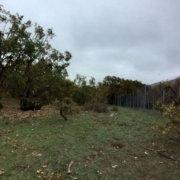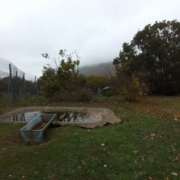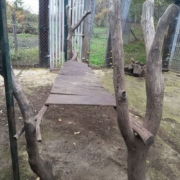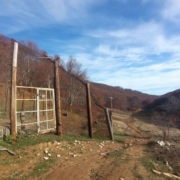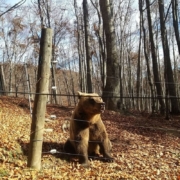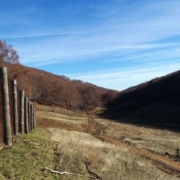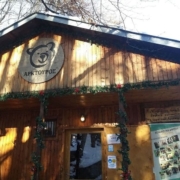What Is Rehabilitation?
Rehabilitation is the care, recovery and re-adaptation of a wild animal that cannot survive on its own in the wild (orphaned, injured, physically damaged, behavioural problems) with the ultimate aim of reintroducing it to the wild.
In rehabilitation we can talk about several key concepts:
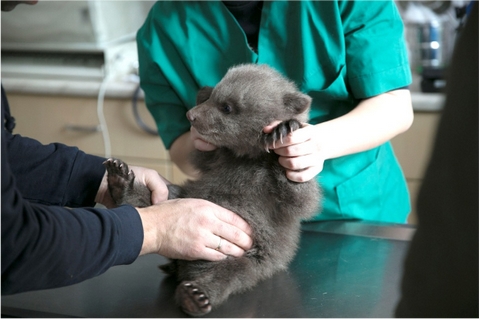 Intervention. Action in the presence of an animal with problems that cannot develop correctly and on its own in the environment. Depending on the condition of the animal, the degree of intervention is evaluated being the highest level in which the animal is captured and transferred to a veterinary clinic or rehabilitation centre.
Intervention. Action in the presence of an animal with problems that cannot develop correctly and on its own in the environment. Depending on the condition of the animal, the degree of intervention is evaluated being the highest level in which the animal is captured and transferred to a veterinary clinic or rehabilitation centre.
Rehabilitation. Recovery of wild animals that have suffered physical or behavioural injuries due to direct or indirect human intervention, such as animals wounded by firearms, strucked, intoxicated by pollutants or sheltered in dwellings, among others, or animals that have suffered accidental e.g. orphaned cubs. It is the process that is carried out to ensure that an animal is prepared for its return to the wild after having been isolated from it by capture and captivity.
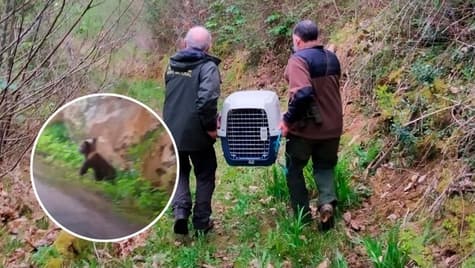
In rehabilitation it is necessary to provide an area with environmental conditions similar to the natural habitat so that the animals can develop and return to their natural environment with the possibility of subsistence, but at the same time that allows the staff to intervene when necessary.
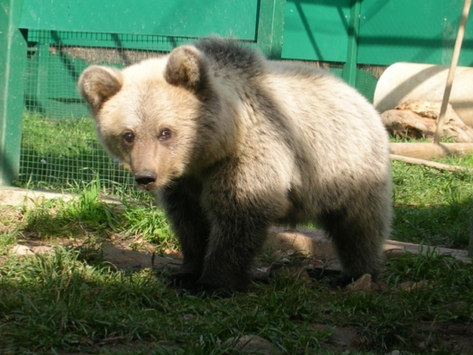
Within the rehabilitation process a distinction has to be made between:
Physical rehabilitation. Its aim is to guarantee the good health and recovery of the animal’s physical capacities in order to facilitate its good performance in the environment.
Biological or behavioural rehabilitation.This is more complex and critical as it involves psychological aspects lesser known nowadays and it aims to ensure that the individual learns to perform successfully in the wild.
Handling facilities. Area in which rehabilitation takes place. Here the environmental suitability of the enclosures should be the priority according to the species hosted seeking to supply the basic biological needs of the animal. It is important to create visual barriers between animals and staff and to limit handling to strictly necessary for health and behavioural monitoring purposes.
It’s very important the use of environmental enrichment methods inside the enclosure, even during the daily management and diets which can range from the adaptation of the environment with living materials such as plants or trees or artificial materials to simulate vegetation. Also, the use of costumes and camouflage materials for grooming and feeding and the presentation of the diets in the most similar way the animals would find it in the wild or in an artificial manner seeking to encourage the search for food.
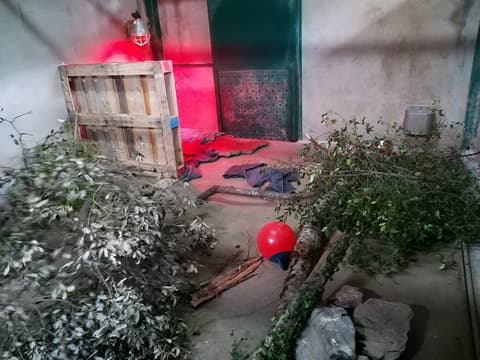 A number of rules must be strictly followed in the installations:
A number of rules must be strictly followed in the installations:
- Do not talk or interact with the animals. Remain as indifferent as possible to contact with the individuals..
- Do not use objects that emit artificial or “human” sounds.
- Rehabilitation areas should be frequented as little as possible, avoiding as much as possible the entry to these areas by personnel from outside the centre.
- Wear dark clothes or clothes that camouflages well with the environment
- Implement and use feeding techniques that simulate the natural environment and feed as naturally as possible.
 Environmental enrichment. Process in which the complexity of the environment where the animal lives is increased with the aim of stimulating it to develop more complex and diverse behaviours. This process is carried out by changes in the environment through new smells, new structures, new objects, interaction between animals of the same or different species…
Environmental enrichment. Process in which the complexity of the environment where the animal lives is increased with the aim of stimulating it to develop more complex and diverse behaviours. This process is carried out by changes in the environment through new smells, new structures, new objects, interaction between animals of the same or different species…
These changes intend to increase animals ́ welfare as it allows to satisfy animals physical and psychological needs.
Reintroduction or release. It is the culmination of the rehabilitation process. Only animals that are physically and behaviourally suitable for release after a process of evaluation should be released.
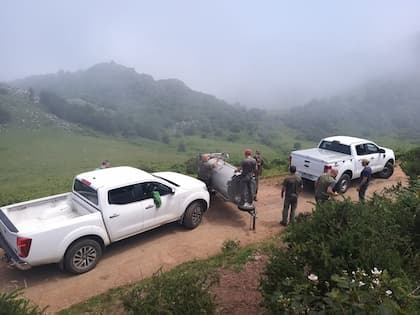
It can be executed in two ways:
- Hard release: capture, transport and release of the animal is done without any acclimatization to the area where the animal is going to be released.
- Soft release: the release of the animal is accompanied by an acclimatization period in the area where the animal is going to be released.
In order so an animal can be safely released in a specific area it is necessary to take several actions beforehand:
- Determine the geographical location where the species is probably founded.
- Depending on the geographical location of the species or subspecies determine a place as safe as possible for the animal (no poaching, hunting, logging, burning or human settlements) and which has large areas of primary or secondary vegetation appropriate for the survival of the species. At this point the home range of the species should be considered.
Tracking. Post-release monitoring is key in rehabilitation and reintroduction processes. Monitoring would indicate if the animals are capable of successfully survive by themselves and whether they are viable as biological components of an ecosystem. In order to carry out monitoring in a scientific way, clear evaluation criteria must be established before and after release in order to make a comparison in the two circumstances so that a statistical model to analyze the results obtained. In the case of lonely animals telemetry can be a good monitoring method as visual observation of a single individual is more complicated.

Bear in trouble. A bear that cannot survive on its own in the wild, e.g. an orphaned bear cub, injured or sick bear, etc. A bear in a situation that would require human intervention to resolve. This category includes cases of abandoned cubs or cubs separated from their family group, wounded or sick bears, bears with obvious signs of sick or poisoning, trapped in a snare or other device, harassed by the presence of a device, by human presence or similar circumstances.
Protocols. Documents that establish guidelines and recommended procedures for rehabilitation in any of its phases.
The following sources have been consulted for the derivation and development of these definitions:
Brieva, C., Sanchez, A., Moreno, W., & Varela, N. (2000). Fundamentos sobre rehabilitación en fauna silvestre. In Memorias Curso Practico, Primer Congreso Colombiano de Zoología ICN. Instituto de Ciencias Naturales, Universidad Nacional de Colombia.
Blanco, JC, Ballesteros, F., Palomero, G. (2016). Rehabilitación de osos huérfanos, heridos y abandonados. Fundación Oso Pardo; documentos técnicos.
Tuñon, J; E. Díaz y J. Naves. 2018 Proyecto “Trabajando el bienestar de osos pardos cantábricos cautivos 2017” Fundación Oso de Asturias – Fundación Biodiversidad
Some Cases of Bear Management in the Rehabilitation Process
Iberian Peninsula
Villarina
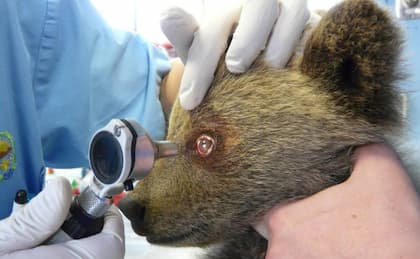 June 2008 – Somiedo Natural Park (Asturias). Villarina was born in January 2008 in Somiedo Natural Park. In June some tourists found her disorientated on the side of a road. The bear was severely malnourished with problems of locomotion, loss of balance, vision problems and other neurological symptoms caused by a severe head injury. On the 11th of November, at about 10 months old, Villarina was released in the Somiedo Natural Park. She weighed 28 kilos, more than the average of a wild cub of her age. She was equipped with a GPS and a VHF radio transmitter attached to the hair on her back which allowed her to be tracked until the following summer. The data provided by the radio transmitters and the remote observations confirmed Villarina’s adaptation to freedom.
June 2008 – Somiedo Natural Park (Asturias). Villarina was born in January 2008 in Somiedo Natural Park. In June some tourists found her disorientated on the side of a road. The bear was severely malnourished with problems of locomotion, loss of balance, vision problems and other neurological symptoms caused by a severe head injury. On the 11th of November, at about 10 months old, Villarina was released in the Somiedo Natural Park. She weighed 28 kilos, more than the average of a wild cub of her age. She was equipped with a GPS and a VHF radio transmitter attached to the hair on her back which allowed her to be tracked until the following summer. The data provided by the radio transmitters and the remote observations confirmed Villarina’s adaptation to freedom.
Lara
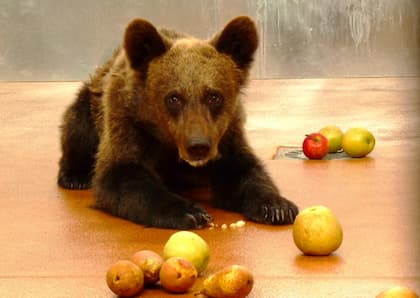 April 2011 – Fuentes del Narcea, Degaña e Ibas Natural Park (Asturias). The bear Lara was found badly wounded when she was about 16 months old. She was very weakened and with penetrating wounds in the inguinal and lumbar region with severe muscle tears and a possible fracture at the level of the left hip.She was in a state of severe cardiovascular and organic shock with severe dehydration.
April 2011 – Fuentes del Narcea, Degaña e Ibas Natural Park (Asturias). The bear Lara was found badly wounded when she was about 16 months old. She was very weakened and with penetrating wounds in the inguinal and lumbar region with severe muscle tears and a possible fracture at the level of the left hip.She was in a state of severe cardiovascular and organic shock with severe dehydration.
After a process of veterinary care, in August 2011 she was released close to where she was found equipped with an eartag, a radio transmitter attached to her fur and a GPS collar.
Jimena
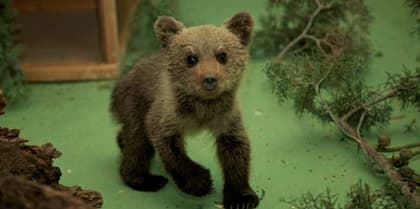 April 2012 – Palacios del Sil (León). Jimena was 3 months old and weighed 5 kilos when she was found by a driver on a road in the northwest of León. On 26 October 2012 when the bear was about 9 months old and weighed 36 kilos she was transferred for release. The bear died in route. The necropsy concluded that death was caused by severe and diffuse degenerative myopathy in addition to alterations compatible with shock.
April 2012 – Palacios del Sil (León). Jimena was 3 months old and weighed 5 kilos when she was found by a driver on a road in the northwest of León. On 26 October 2012 when the bear was about 9 months old and weighed 36 kilos she was transferred for release. The bear died in route. The necropsy concluded that death was caused by severe and diffuse degenerative myopathy in addition to alterations compatible with shock.
Molina
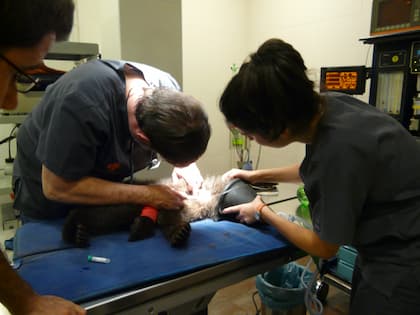 September 2013 – Fuentes del Narcea, Degaña e Ibas Natural Park (Asturias). Molina who weighed only 6 kilos (a third of the normal weight for cubs of its age) was in a deplorable physical state, presenting dehydration, cachexia, anaemia, anaemia, renal insufficiency, craniocerebral trauma and hip dislocation when she was located. Once she recovered, she was released on November in the Integral Natural Reserve of Muniellos and was equipped with two radio transmitters that allowed her to be followed during the next months.
September 2013 – Fuentes del Narcea, Degaña e Ibas Natural Park (Asturias). Molina who weighed only 6 kilos (a third of the normal weight for cubs of its age) was in a deplorable physical state, presenting dehydration, cachexia, anaemia, anaemia, renal insufficiency, craniocerebral trauma and hip dislocation when she was located. Once she recovered, she was released on November in the Integral Natural Reserve of Muniellos and was equipped with two radio transmitters that allowed her to be followed during the next months.
At first Molina behaved normally but a few days later she began to approach to the town of Degaña with no apparent fear of people. Some attempts were made to scare the bear but she did not run away. Due to this situation the Asturias Government decided to capture Molina and transfer her to the bear enclosure of Fundación Oso de Asturias. The intense and unavoidable contact with the veterinarians who cured her serious wounds is perhaps the cause of her habituation to people.
Auberta
April 2014 – Valle de Arán, Pirineos (Lleida). 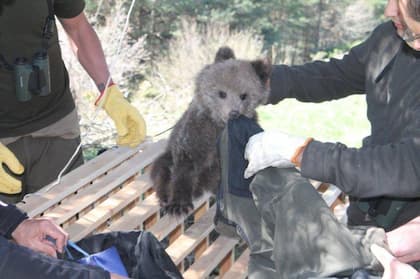 Auberta was 3 and a half months when she was found. She was in good physical condition although without her mother. For nine days several attempts were made to release her with the hope that she would be reunited with her mother without success. She was finally moved to an enclosure built in a beech-fir forest away from human activity. After bear cub ́s good behaviour it was decided to prepare for its release in the environment near the enclosure and to equip her with GPS transmitter attached to its fur, ear tags and an intraperitoneal VHF transmitter. After several days she was found dead. The necropsy determined that the death was caused by the exit of the intestine due to the dehiscence of the ventral incision of the operation in which the intraperitoneal transmitter was placed.
Auberta was 3 and a half months when she was found. She was in good physical condition although without her mother. For nine days several attempts were made to release her with the hope that she would be reunited with her mother without success. She was finally moved to an enclosure built in a beech-fir forest away from human activity. After bear cub ́s good behaviour it was decided to prepare for its release in the environment near the enclosure and to equip her with GPS transmitter attached to its fur, ear tags and an intraperitoneal VHF transmitter. After several days she was found dead. The necropsy determined that the death was caused by the exit of the intestine due to the dehiscence of the ventral incision of the operation in which the intraperitoneal transmitter was placed.
Yernes
 April 2021 – Yernes y Tameza (Asturias). A group of hikers spot a lone bear cub on a road. It was a male bear cub of about 3 months old and 2.8 kg weight. It was left during the day in a carrier to see if the mother appeared. However, at nightfall and due to the risk caused by the cold temperatures it was decided to intervene and pick it up. The bear cub evolved favorably and on 22nd July the Environment Service of the Principality of Asturias decided to release it in an area close to where it was found with a weight of 21 kg. Before the release Yernes was equipped with a fur GPS and an eartag. Radio-tracking shows a normal behaviour of the cub and its successful adaptation to the natural environment.
April 2021 – Yernes y Tameza (Asturias). A group of hikers spot a lone bear cub on a road. It was a male bear cub of about 3 months old and 2.8 kg weight. It was left during the day in a carrier to see if the mother appeared. However, at nightfall and due to the risk caused by the cold temperatures it was decided to intervene and pick it up. The bear cub evolved favorably and on 22nd July the Environment Service of the Principality of Asturias decided to release it in an area close to where it was found with a weight of 21 kg. Before the release Yernes was equipped with a fur GPS and an eartag. Radio-tracking shows a normal behaviour of the cub and its successful adaptation to the natural environment.
Rest of Europe
Mellous
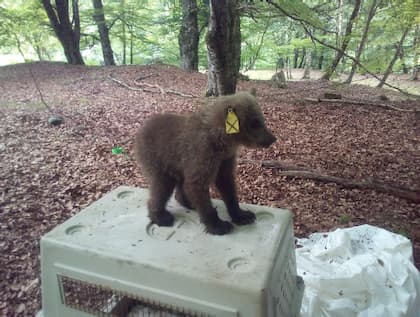 July 2018. A bear cub, about six months old and in apparent good physical condition, is found without its mother. Genetic sampling, installation of the VHF transmitter, rehydration, feeding and behavioural observation are done. At night it is released. After two days the bear is recaptured because of its stereotyped behaviour but when it regains normal behaviour it is decided to release it again. Two weeks later it turns up dead. The autopsy shows cachexia (severe weakening of the body) and cranial hypertension as causes of death.
July 2018. A bear cub, about six months old and in apparent good physical condition, is found without its mother. Genetic sampling, installation of the VHF transmitter, rehydration, feeding and behavioural observation are done. At night it is released. After two days the bear is recaptured because of its stereotyped behaviour but when it regains normal behaviour it is decided to release it again. Two weeks later it turns up dead. The autopsy shows cachexia (severe weakening of the body) and cranial hypertension as causes of death.
Douilluous
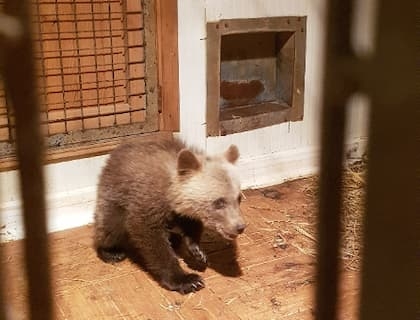 June 2019 – Arise (French pyrenees). In June, a bear cub is captured for rehabilitation and release in Ariège (France). It is proposed to release the cub as soon as possible in order to avoid habituation to people.
June 2019 – Arise (French pyrenees). In June, a bear cub is captured for rehabilitation and release in Ariège (France). It is proposed to release the cub as soon as possible in order to avoid habituation to people.
Before releasing it, a behavioural test is carried out to check the reaction to human presence and the test is favourable (non-familiarity with humans), so it is released in September with a GPS collar and a VHF transmitter. The results of its monitoring confirm a favourable adaptation to the environment.
Romania
Romania is the European country with the highest number of cases of interventions as a result of its high bear population. In the case of the experience of Bear Again, about 200 bears have been successfully rehabilitated and returned to the wild which otherwise would have ended up in zoos or sanctuaries.
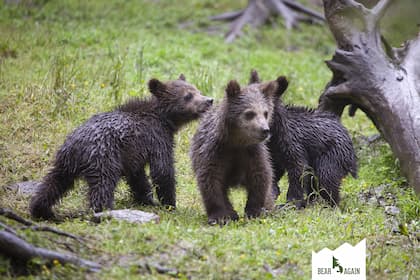 Here we cannot talk about specific cases as with all the intervened cubs (up to 35/40 cubs at the same time) a similar protocol is followed and generally simultaneous for all individuals. In a first phase (during their first year of life) and in case they do not have specific veterinary needs, the orphaned cubs are placed in a naturalized enclosure which allows the development of their natural instincts. Later on, in a second phase (during the second year) they move to a semi-freedom or exploration phase in which the main enclosure is opened up and the cubs begin to explore in a gradual way and begin to disperse.
Here we cannot talk about specific cases as with all the intervened cubs (up to 35/40 cubs at the same time) a similar protocol is followed and generally simultaneous for all individuals. In a first phase (during their first year of life) and in case they do not have specific veterinary needs, the orphaned cubs are placed in a naturalized enclosure which allows the development of their natural instincts. Later on, in a second phase (during the second year) they move to a semi-freedom or exploration phase in which the main enclosure is opened up and the cubs begin to explore in a gradual way and begin to disperse.
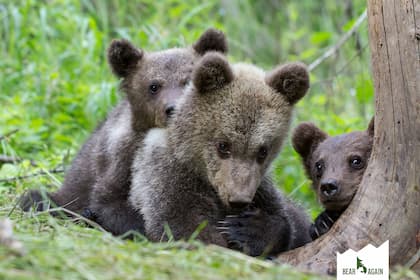 During this phase, the food provided to the cubs in the enclosure decreases and becomes zero at the end encouraging dispersal movements. At this time bears that are going to be reintroduced into their origin areas are captured and transported to their final release site time when a GPS collar is fitted to the bears for subsequent tracking. During the rehabilitation process food is provided by avoiding the association food – humans for which a drone is used and soon a cable system will be used, so that no one has to get close to the cubs to feed them. In addition, the area where the rehabilitation is being carried out is restricted to reduce human contact with the cubs to a minimum.
During this phase, the food provided to the cubs in the enclosure decreases and becomes zero at the end encouraging dispersal movements. At this time bears that are going to be reintroduced into their origin areas are captured and transported to their final release site time when a GPS collar is fitted to the bears for subsequent tracking. During the rehabilitation process food is provided by avoiding the association food – humans for which a drone is used and soon a cable system will be used, so that no one has to get close to the cubs to feed them. In addition, the area where the rehabilitation is being carried out is restricted to reduce human contact with the cubs to a minimum.
The survival rate after release is around 60%. It is considered that the success of the rehabilitation process is not measured by the survival rate of the cubs after release but rather by the degree of adaptability to life in the wild without resulting in bears habituated to bad or problematic behaviour.
Grecia
ARCTUROS has established a rehabilitation program for injured or orphaned large carnivores and ungulates (e.g., bear, wolf, jackal, red deer, roe deer). ARCTUROS already counts 12 successful reintroductions of bear cubs into the wild, 5 successful reintroductions of roe deer while for the first time in 2022, ARCTUROS will attempt the first reintroductions for an orphaned wolf and a jackal. When the animals are ready for their release- usually around their first year of age- the scientific team of ARCTUROS will locate the perfect spot for the release, far from human activity and roads. All animals rehabilitated by ARCTUROS are released with a satellite collar which indicates their location for several months post release.
Rehabilitation Facilities
Bear enclosures in Santo Adriano – Asturias (Fundación Oso de Asturias)
FOA has two enclosures to house bears in captivity:
Enclosure 1. Enclosure with an area of woodland of almost 40,000 m2 located on a limestone slope with abundant vegetation, mainly oaks and hazelnut trees. Inside it there is another enclosure for use and management of approximately 800 m2 where there is a water supply point, feeding cages and two artificial bear holes.
Enclosure 2. These facilities are divided into three areas with a total surface area of approximately 7,000 m2. They are designed to allow handling the animals depending on the different circumstances that may exist.
The first of the two enclosures was opened in 1996 in response to the need to find a place to house Paca and Tola (two female Cantabrian brown bears rescued from poachers and impossible to be returned to their natural environment due to their habitation to human presence) so an enclosure was built around an area of woodland of more than four hectares. Located opposite to the first one, the other facilities were built in 2008.
These facilities allow an easy handling of the animals without having to use any chemical methods of immobilization (anaesthesia). This enclosure is subdivided into three areas connected to each other. It is designed without corners to prevent one animal from cornering another.
It is in this second enclosure where the rehabilitations facilities are being developed. There is currently an indoor space of 20m2 equipped with ultraviolet light to avoid the cold, environmental enrichment, scales and a real-time surveillance camera and an external space of about 120 m2 with environmental enrichment and enclosed by an electric fence and a wooden panel that prevents both vision and external sound and a real-time video surveillance camera. It is planned to extend the outdoor space by communicating the current one with the rest of the existing enclosure.
Cantabria’s Wildlife Recovery Centre in Villaescusa (Government of Cantabria)
Unit for brown bears ́ recovery in the CRFS of Villaescusa, Cantabria.
Cantabria’s Wildlife Recovery Centre has a specific facility for the hospitalization and recovery of brown bears. This facility of about 150 square metres has an outdoor enclosure and two indoor enclosures.
The facilities are video-supervised and managed from the outside which makes it possible to work in them (naturalising them, cleaning and handling the animals, etc.) avoiding contact with the individuals. The Recovery Centre also has the facilities of a veterinary hospital: X-ray room, operating theatre with anaesthetic gases and a fully equipped laboratory to carry out analytical controls of the bears.
Monte Dehesa de Valsemana – León (Junta de Castilla y León)
It occupies an area of 1000 hectares and consists of two enclosures of 0.60 and 0.92 hectares respectively. They are surrounded by a wall made of concrete blocks with a height of between 2.5 and 4 metres, electric fences and it has 8 cameras for video surveillance.
Both enclosures are fully revegetated with trees of different sizes and crossed by a stream. There is a central rocky area in the form of a bear cave. Interior and exterior of the artificial cave are fitted out to guarantee thermal and rain insulation and to resemble the entrance of a natural cave (wood, grass, logs).
It is accessible by vehicle and culvert trap and boom truck if introduction of large environmental enrichment elements would be needed. On the other hand, the entire perimeter of the enclosure is accessible in case it is necessary to vary the feeding points.
Val d’Arán (Generalitat de Catalunya)
The enclosure consists of an area of 1 hectare. The space between the posts is five metres depending on the orography of the terrain anchored to the ground with concrete at a minimum depth of 80 cm.
The netting that encloses the fences is a 3 meters high reinforced net on the general perimeter. Along the fence there are 5 lines of electric protection wire.
Bear Again (Rumanía)
Bear Again facilities have a fencing system spread over an area of 22 hectares.
The “accommodation” enclosure (the first enclosure in which the newly arrived cubs are housed) is the first and smallest with a round shape and a diameter of about 40 metres. Like all the enclosures in the centre, it is made of solid wood posts (oak and acacia) about 1.5 to 2 metres long and between 7 and 15 centimetres wide spaced about 2 metres apart. The fence consists of a metal net fixed to the posts and buried in the ground to a depth of 30-40cm. What characterises this enclosure is that the electric cables inside the enclosure are placed closer to each other because of the cubs here are still small (2-5 months old). The first wire is placed about 5 cm from the floor and the other 6 wires are placed 10 cm apart from each other.
At about half the height of the wooden posts curved metal plates have been added to the inside of the enclosure to prevent the bear cubs from leaving the enclosure until they learn to avoid the fences. On the outside of the enclosure there are 4 electric cables placed about 40 cm apart to prevent wild bears and other predators from entering the enclosure.
The following 3 enclosures are similarly made with the same types of materials but there are 5 electrical cables inside about 25 cm from each other and 3 electrical cables outside about 40 cm from each other.
The last enclosure is approximately 2 hectares size and consists of two lines of fences placed approximately 1.5 metres apart which have between 7 and 10 electric wires only inside the site.
Arcturos (Greece)
The facilities of the rehabilitation centre are located in an isolated forest area, in the Prefecture of Florina in northwestern Greece. Access to the 8 hectare-large facility is granted strictly only to the technical personnel of ARCTUROS. The rehabilitation facility consists of oak forest and includes artificial pools and dens for the cubs’ winter sleep.

